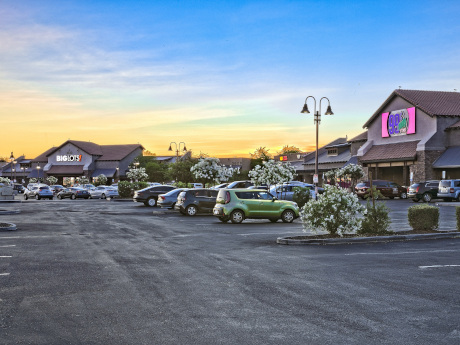— By Dave Cheatham, President, Velocity Retail Group and X Team Retail Advisors —
Phoenix’s retail market has rebounded post-pandemic and is now considered a winning bet, along with industrial and multifamily. The market has benefitted from surging consumer demand, population expansion and a robust technology industry, largely fueled by accelerated growth in the chip manufacturing sector. Strong and positive economic performance has established a foundation on which retailers have built success across the Valley of the Sun.
There are challenges, to be sure, which range from interest rate hikes and rising inflation to chaos in the capital markets and reduced investment transaction volume, in addition to increased construction costs. New construction has been limited, as evidenced by the fact that no Target, Lowe’s or Home Depot stores have been built in the Valley since the recession. That appears to be changing as plans for big box stores that had been idle for a decade are shifting to expansion mode once more. Second-generation space is in high demand due to the higher costs of building new, standalone stores.
Market indicators are trending upward for the retail sector. Vacancies are at a record low, demand remains high and rents are continuing to rise. Retailers are showing an ability to adapt to online shopping by incorporating a variety of approaches that embrace, integrate and facilitate ecommerce, while retaining their brick-and-mortar strategies.
Current vacancy rates across the Valley are:
• NW Phoenix, 5.3 percent vacancy, now and a year ago
• Southwest region, 3 percent vacancy
• Northeast, 3.8 percent
• North, 3.3 percent
• Southeast, 5.5 percent, down from 6.1 percent at year-end 2022
• Central, 5.7 percent, down from 7.5 percent at year-end 2022
The strength of the Phoenix retail market is easily visible through the quick absorption of available big box space. Two examples of this are former Tuesday Morning and Bed Bath & Beyond structures, several of which were immediately leased upon vacancy. Instead of dragging down the retail sector, their rapid lease-up reflected the high demand for well-located sites, displaying, instead, how resilient the market was in 2023.
Velocity research shows that the number of vacant boxes in Arizona has dropped to 90 compared to 123 a year ago. This is the lowest availability in the past 25 years, pointing toward an increasing occupancy rate and higher costs for new construction that are driving rental rates to new highs.
Phoenix’s top-performing retail categories as a new year unfolds include retail, pads and smaller-sized locations in the 2,000- to 2,500-square-foot range. We are seeing activity in the restaurant category, though finding available space is challenging – especially for those with drive-through capacity.
The year ahead promises to be one of continued growth for retail across the Phoenix market. Stability will be tempered through an election year, as retailers balance growth plans against economic conditions. More clarity and certainty about where interest rates may land will give retailers more confidence about expansion and roll-out plans. Phoenix is expected to be one of the key markets where retailers want — and need — to be in 2024.


